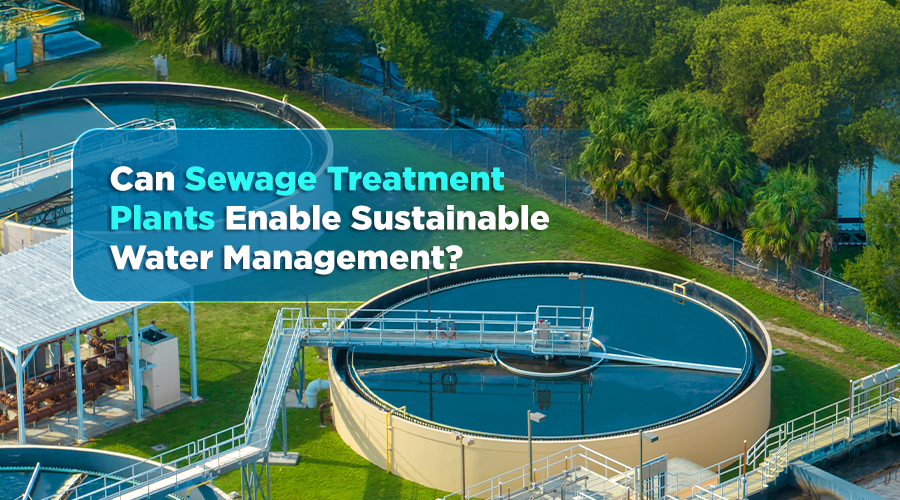“In Bengaluru, green space has declined from nearly 70% about 50 years ago to less than 3% in 2020” – Dr. TV Ramachandra et al., Indian Institute of Science
Read that quote again. That is the reality we and the future generations have to live with and face every day that we spend living in Bengaluru. Once called the Garden city of India, Bengaluru is now the Silicon Valley of India – what about the future?
Technologically, it is great for the city. Bengaluru was previously seen as a retirement destination but now it is almost every young professional’s dream city. The weather and the people of the city have always been warm to all the immigrants. However, now, it will get warmer and not because of the hospitality that the city has been offering to each of its citizens over the years. In recent years, the city’s rapid population growth has adversely affected its environment. Bengaluru is being showered with more titles now than ever before – ‘Asthma Capital of India’, ‘The most traffic congested city of the country’
Bengaluru’s natural resources are being consumed at a much faster pace & in an unplanned manner. These resources were always the beauty and pristine nature of its environment. Today, the city suffers from air pollution, which is depicted by the number of asthma patients, water pollution as witnessed from the polluted lakes, pollution of Vrishabhavathi river and also from sound pollution due to excessive traffic. The city has fallen prey to rapid uncontrolled expansion due to the sudden economic boom and the resulting growth of employment opportunities. To house the unprecedented increase of population, residential areas have been and are being constructed on what previously were agricultural lands, forest covers and also by filling up lakes with soil. This continues to be an issue till date. The illegal encroachments on Raja Kaluway were only noticed because of the waterlogging and flooding issues caused by the excess rains in 2016.
If we wish to preserve the appeal that Bengaluru has, and retains its beautiful climate, we have to work towards restoring it to the former environmental glory. Water pollution has been discussed at length previously, today’s attempt is to draw more attention and provide centre stage to air pollution, more specifically greenhouse gas emissions of the city.
Further, the importance of CIRIS (City Inventory Reporting and Information System), for not just Bengaluru, but also to other cities of India and other countries will be highlighted in this article.
As an introduction, the City Inventory Reporting and Information System (CIRIS) is an accessible and easy-to-use Excel-based tool for managing, calculating and reporting city greenhouse gas emissions inventory data. CIRIS provides a systematic and templated way for cities to input information and use it for a variety of processes. It works effectively by dividing data with respect to the sectors. The five sectors that the CIRIS considers are –
- Stationary energy (Buildings)
- Transportation
- Waste
- Industrial Processes and Product Use (IPPU)
- Agriculture, Forestry and Other Land Use (AFOLU)
The recent policy of National Clean Air Programme (NCAP) launched by the Government of India to tackle the problem of air pollution is commendable. It aims to implement changes through five-year plans. But one has to note that there have been policies introduced in the past as well to curb air pollution. And they have been reactions to international pressure. Thus, it is safe to say that better implementation needs to take priority.
Global GHG Emissions
To talk about Bengaluru in specific, we first need to understand the stakes at global level. The following is the split up of GHG emissions based on the type of gas contributing for the total emissions –

Figure 1 – Source: https://www.epa.gov/ghgemissions/global-greenhouse-gas-emissions-data
Distribution of GHG Emissions based on the sector is as follows –

Figure 2 – Source: https://www.epa.gov/ghgemissions/global-greenhouse-gas-emissions-data
Distribution of GHG Emissions (Country wise contribution) –

Figure 3 – Source: https://www.epa.gov/ghgemissions/global-greenhouse-gas-emissions-data
And finally, the trend of GHG emissions plotted spanning from 1900 to 2014 is as follows –

Figure 4 – Source: https://www.epa.gov/ghgemissions/global-greenhouse-gas-emissions-data
The graphs and the statistical evidence put forward by these studies is impeccable evidence of the level of emergency that air pollution is, even at a global level. The graph depicting the trend of GHG emissions shows a very steady rise and the country-based contribution sheds light on the major contributors to this trend.
The United Nations Framework Convention on Climate Change (UNFCCC) conducts a Conference of Parties (COP) every year to push the countries towards a more sustainable path. This has led to the increase of policies adopted by the countries across the globe to look for solutions for these environmental problems.
On a global level, multiple organisations such as CDP, C40 Cities, ICLEI and others are working towards achieving the goal of environmental sustainability and aiding countries’ race towards net zero emissions and also to achieve resilience. Countries such as Italy, Japan, Kenya, Brazil, United Kingdom and USA have pledged to reduce emissions and have already started journey down the sustainability path with the help of these organisations.
South Asian Countries’ GHG Emissions
Trend of GHG Emissions of South Asian countries (1960 to 2016) – (Unit: 1000 million metric tonnes)

Figure 5 – Source: https://data.worldbank.org/indicator/EN.ATM.CO2E.KT?locations=8S
The trend observed in South Asian countries is not much different from the trend seen in the global GHG emissions.
‘One of the most vulnerable regions of climate change is witnessing the world’s biggest jump in greenhouse gas emissions’ writes Amit Prakash in his article, Boiling Point, about effects of climate change on Southeast Asian countries. In Vietnam, the typhoons and floods are becoming more intense and frequent. This has been the case even in other countries of the South Asian region. With average temperatures rising steadily every decade from 1960, Vietnam, Myanmar, Philippines and Thailand are among the top 10 countries most affected by climate change in the past 20-25 years. It is more tragic considering the fact that these countries’ contribution towards pollution is rather low while the economic impact faced by these countries is vastly negative. But this doesn’t mean that their contribution towards climate change is non-existent. Due to the developing nature of these countries, the policies employed for the country’s development might not always be good for the environment. Deforestation is rampant in the forests of Indonesia and Malaysia which are major contributors to GHG emissions. Thus, these countries also have the dual challenge of not just adapting to the present effects of climate change but also to regulate strategies that contribute to global warming. And with the help of other global powers, the South Asian countries have started to adopt more environmentally sustainable practices but the balance of economic activity and environmental sustainability is always tough to achieve.
Indian GHG Emissions
India is the third largest contributor of GHG emissions globally and has experienced a rise of 335% in GHG emissions since 1990. As already seen through the pie chart of country based GHG emissions contribution, India accounts for 7% of the world’s GHG emissions. Following is the trend of GHG emissions in India from 1970 to 2018 – (Unit: Thousand million metric tonnes)

Figure 6 – Source: https://data.worldbank.org/indicator/EN.ATM.GHGT.KT.CE?locations=IN
In comparison to South Asian countries, it can be seen that India contributes more towards GHG emissions than all the South Asian countries put together. This can be due to the 2nd largest population in the world and also due to the economical strides taken by the governments. On the brighter side, when compared to China, who contribute 30% to GHG emissions, our emission levels start to look small. But we are on the same path that led China towards those tremendous emission rates, thus it is highly necessary for us to start better implementation of policies to ensure protection and development of environmental sustainability.
To manage GHG emissions through an inventory system, India already has a National GHG Inventory compiled by NATCOM (National Communication) Cell/Project Management Unit (PMU). But the main drawback of this system is the lack of strong laws and framework. The presence of multiple departments complicates the management system. The existing structure of the inventory management system of India is non-sustainable and non-centralized. These are only a few of the existing drawbacks of India’s existing system. CIRIS on the other hand, solves the key issues that the current Indian system is struggling with. It should also be noted that a few non-governmental organisations have created GHG inventory systems such as GHG Platform India, India GHG Programme and Carbon Disclosure Project. But these inventories lack complete data due to lack of availability and access to sectors. Hence it is safe to say that India is struggling with the management of GHG emissions which makes CIRIS a viable option.
Bengaluru’s GHG emissions
With a current population of approximately 13.2 million people and a growth rate of more than people per year, Bengaluru is not going to slow down anytime soon. The following table shows the distribution of pollutants emitted – (Unit: CO2 in mil tons/year; Others in tons/year) –Study conducted in 2015, but updated to 2022.
| PM 2.5 | PM 10 | BC | OC | Nox | CO | VOC | SO2 | CO2 | |
| TRAN | 12550 | 13200 | 5100 | 4050 | 24100 | 237,300 | 70650 | 1300 | 6.68 |
| RESI | 2050 | 2050 | 700 | 800 | 1400 | 20300 | 2350 | 750 | 1.60 |
| INDU | 2650 | 2700 | 1750 | 200 | 16050 | 20600 | 2900 | 1650 | 1.23 |
| DUST | 6400 | 41200 | – | – | – | – | – | – | – |
| WAST | 3500 | 3700 | 250 | 2100 | 100 | 16800 | 3400 | 100 | 0.02 |
| DGST | 1250 | 1350 | 750 | 250 | 11950 | 3150 | 300 | 100 | 0.54 |
| BRIC | 2900 | 2900 | 800 | 1050 | 3300 | 37400 | 3900 | 1400 | 0.34 |
| Total | 31300 | 67100 | 9350 | 8450 | 56900 | 335,550 | 83500 | 5300 | 10.42 |
Table 1 – Source: https://urbanemissions.info/india-apna/bengaluru-india/
- TRAN = transport emissions from road, rail, aviation, and shipping (for coastal cities);
- RESI = residential emissions from cooking, heating, and lighting activities;
- INDU = industrial emissions from small, medium, and heavy industries (including power generation);
- DUST = dust emissions from road re-suspension and construction activities;
- WAST = open waste burning emissions;
- DGST = diesel generator set emissions;
- BRIC = brick kiln emissions (not included in the industrial emissions)
With the loss of natural resources and green cover, the citizens of Bengaluru are going to face life altering consequences. Already named the ‘Asthma Capital of India’, air pollution in the city has only gotten worse, creating a dangerous and alarming situation to the residents. With the lack of know-how of the management of various sectors to curtail air pollution, CIRIS can provide the required platform to start implementation. Tried and tested in cities around the world, the system is efficient in reporting GHG emissions. Adoption of CIRIS will also see the manifestation of the main aims of the B.PAC’s Bengaluru Sustainability Manifesto.
Conclusion
The world is slowly falling into chaos. This chaos is not in the traditional sense. Struggles will be related to saving depleting natural resources, which are essential for survival and not development. Climate change is slowly pulling the rug under our feet without us even noticing it. When it gets out of hand, the world will turn upside down with what was previously taken for granted now becoming the most valuable materials on the planet, namely water and air.
If countries, states and cities do not wake up now and work towards preserving the existing resources and replenishing exhausted ones, the whole civilization as we know it will collapse. This article has briefly explained why CIRIS is required based on the air pollution data available in the public domain. In the past two decades, the world has been keen on India’s economic growth and people around the globe are watching and paying attention. We have grown to be one of the strongest nations on the planet. In this situation, if Bengaluru can set the tone in matters of environmental sustainability for the rest of the cities of the country to follow, Bengaluru can be restored to its former environmental glory, only now at a global level.
References:
- B.PAC – Bengaluru Sustainability Manifesto – https://bpac.in/home-test/images/bsm/Bengaluru_Sustainability_Manifesto_dow.pdf
- CIRIS –
- https://www.c40knowledgehub.org/s/article/City-Inventory-Reporting-and-Information-System-CIRIS?language=en_US
- https://cdn.cdp.net/cdp-production/cms/reports/documents/000/005/885/original/CDP_Collaborative_City_State_Regions_Report.pdf?1633362006
- https://ndcpartnership.org/toolbox/city-inventory-reporting-and-information-system
- https://resourcecentre.c40.org/resources/reporting-ghg-emissions-inventories
- Global GHG:
- Under-reporting of greenhouse gas emissions in U.S. cities https://www.nature.com/articles/s41467-020-20871-0
- Towards common GHG inventory reporting tables for Biennial Transparency Reports https://www.oecd.org/officialdocuments/publicdisplaydocumentpdf/?cote=COM/ENV/EPOC/IEA/SLT(2021)1&docLanguage=En
- An Integrated Global Greenhouse Gas Information System (IG3IS) https://public.wmo.int/en/resources/bulletin/integrated-global-greenhouse-gas-information-system-ig3is
- Emerging reporting and verification needs under the Paris Agreement: How can the research community effectively contribute? https://www.sciencedirect.com/science/article/pii/S146290112100109X
- Global Greenhouse Gas Emissions Data https://www.epa.gov/ghgemissions/global-greenhouse-gas-emissions-data
- South and South-East Asian GHG:
- CO2 Emissions South Asia – https://data.worldbank.org/indicator/EN.ATM.CO2E.KT?locations=8S
- Impact of Climate Change in South-East Asia – https://www.imf.org/external/pubs/ft/fandd/2018/09/southeast-asia-climate-change-and-greenhouse-gas-emissions-prakash.htm
- Economics of Reducing GHG Emissions in South Asia: Options and Costs – https://www.adb.org/publications/economics-reducing-greenhouse-gas-emissions-south-asia-options-and-costs
- South-East Asia and the Economics of Global Climate Stabilization – https://www.adb.org/sites/default/files/publication/178615/sea-economics-global-climate-stabilization.pdf
- South Asia: Shared views on development and climate change – https://www.unisdr.org/files/12562_SouthAsiaWB01.pdf
- Decarbonising South and South-East Asia – https://climateanalytics.org/media/decarbonisingasia2019-fullreport-climateanalytics.pdf
- Energy consumption and CO2 emissions in South-East Asia – https://news.cgtn.com/news/2020-10-09/Energy-consumption-and-CO2-emission-in-Southeast-Asia-Uqld84T1Nm/index.html
- Greenhouse has budgets of South and South-East Asia – https://www.apn-gcr.org/wp-content/uploads/2020/09/5253b0bd84994dd722042caa88c18ef2.pdf
- Finding Solutions to Air Pollution in India –https://www.orfonline.org/research/finding-solutions-to-air-pollution-in-india-the-role-of-policy-finance-and-communities-74311/
- India GHG:
- National Inventory Managemnent system in India https://www.teriin.org/sites/default/files/2020-09/NIMS_dp2020.pdf
- 71% of Mumbai’s greenhouse gas emissions due to electricity usage: Study https://www.hindustantimes.com/cities/mumbai-news/71-of-mumbai-s-greenhouse-gas-emissions-due-to-electricity-usage-study-101630087951470.html
- India: CO2 Country Profile – https://ourworldindata.org/co2/country/india
- India has seen GHG emissions increase by a staggering 335% since 1990 – https://www.climatescorecard.org/2020/12/india-has-seen-greenhouse-gas-emissions-increase-by-a-staggering-335-since-1990/
- India GHG Program – https://www.indiaghgp.org
- GHG Platform India – http://www.ghgplatform-india.org
- Total GHG Emissions – https://data.worldbank.org/indicator/EN.ATM.GHGT.KT.CE?locations=IN
- Key Drivers of Indian GHG Emissions – https://www.epw.in/journal/2020/15/special-articles/key-drivers-indian-greenhouse-gas-emissions.html
- Bengaluru GHG –
- How a citizen’s group in Bengaluru is battling climate change https://lifestyle.livemint.com/smart-living/environment/how-a-citizen-s-group-in-bengaluru-is-battling-climate-change-111633356134839.html
- Urban Emissions Bengaluru – https://urbanemissions.info/india-apna/bengaluru-india/
- Bengaluru’s carbon emissions: how much? what to do? https://bengaluru.citizenmatters.in/1831-carbon-emission-level-bangalore-1831
- Namma CO2 emission is high, and it can make one ill https://www.deccanherald.com/city/focus-bengaluru/namma-co2-emission-is-high-and-it-can-make-one-ill-807423.html
- BBMP commits to Paris Agreement on climate change https://www.newindianexpress.com/cities/bengaluru/2021/jan/22/bbmp-commits-to-paris-agreement-on-climate-change-2253378.html
- GHG Inventory https://kspcb.karnataka.gov.in/sites/default/files/inline-files/series%201.pdf
- B’luru’s vehicles highest emitters of greenhouse gases: IISc http://timesofindia.indiatimes.com/articleshow/46601232.cms?utm_source=contentofinterest&utm_medium=text&utm_campaign=cppst
- Municipal solid waste: Generation, composition and GHG emissions in Bangalore, India https://www.sciencedirect.com/science/article/abs/pii/S1364032117313369





